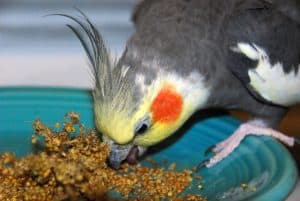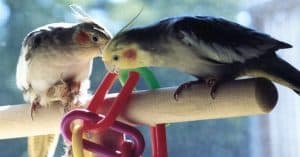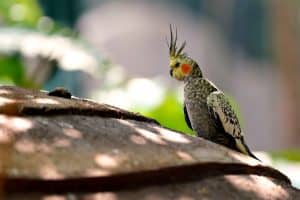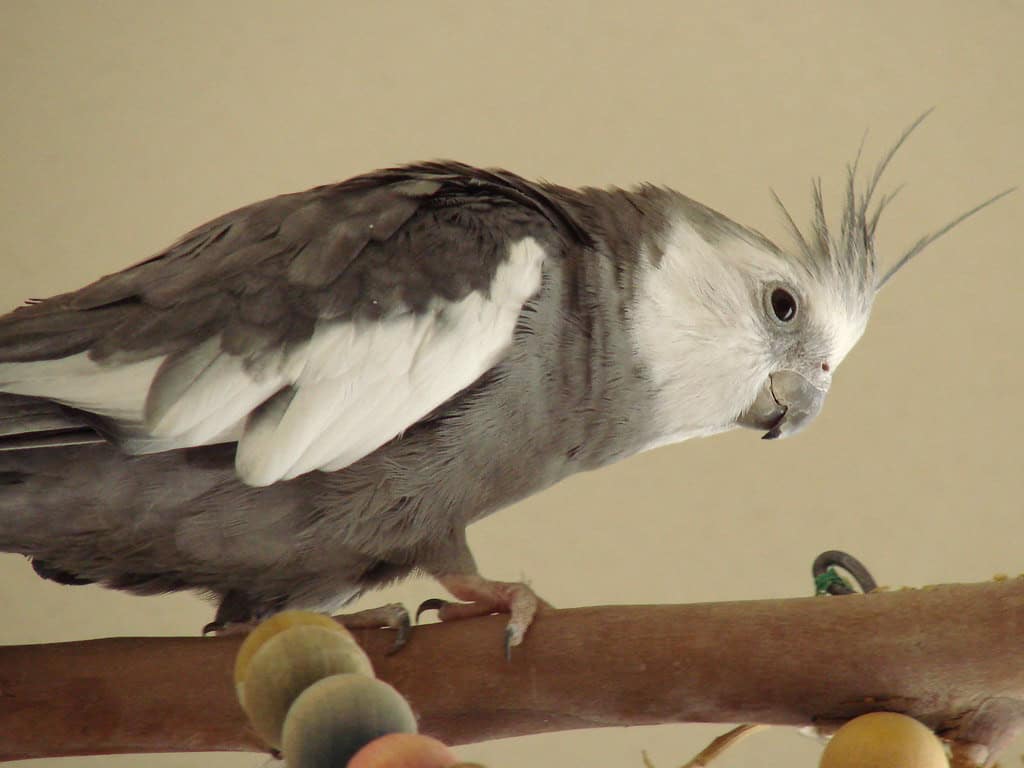Have you ever asked yourself, “How does a cockatiel got her name?” These delightful and vibrant birds, cherished by pet owners and bird enthusiasts alike, are renowned for their striking crests and spirited personalities. Yet, their unique name carries more significance than one might initially realize.
Exploring the origins of the cockatiel’s name offers a captivating glimpse into history and language. Understanding this origin not only enhances your knowledge of these fascinating birds but also enriches your appreciation for their role in our lives. Join us as we uncover the intriguing story behind how the cockatiel got her name and what it reveals about our connection with these charming feathered friends.
Historical Background of Cockatiel Names

The name “cockatiel” reflects a fascinating linguistic journey that traces back to the bird’s visual and behavioral resemblances to another bird species. This section delves into how the cockatiel got its name, enhancing your understanding of these popular pet birds.
Origin of the Name “Cockatiel”
The term “cockatiel” is derived from the Dutch word “kakatielje,” which was a diminutive form of the word “kakatoe,” meaning cockatoo. This name adaptation highlights the cockatiel’s affiliation with the cockatoo family, specifically pointing to their smaller size and similar features. Historically, when European explorers first encountered cockatiels in Australia in the 18th century, they noted their resemblance to the cockatoos, although the cockatiel is notably smaller and less vocally intense.
In the context of their origin, cockatiels are also known by their scientific name, Nymphicus hollandicus. The name “Nymphicus” reflects their elegant and delicate appearance, likening them to mythical nymphs. The term “hollandicus” refers to New Holland, a historical name for Australia used by Europeans during their initial explorations. Therefore, the cockatiel’s name is not just a casual label but a blend of cultural encounters and the manifestation of their graceful demeanor as observed by early explorers.
Understanding these origins sheds light on how names can significantly reflect physical and cultural associations and provides a deeper appreciation for the nomenclatural history tied to these charming birds.
Cultural Significance of Naming
The cultural significance of naming a cockatiel lies deeply in the historical and regional backgrounds that shape the traditions surrounding these pet birds. Names are not merely functional tags but carry immense cultural value, reflecting the heritage and interaction between the native species and human societies.
Influences from Indigenous Australian Heritage
Names given to cockatiels often honor their Indigenous Australian roots. Indigenous names are deeply symbolic, typically reflecting the bird’s natural behaviors or its environments. For example, the term “cockatiel” itself, derived from the Dutch “kakatielje,” showcases the European engagement with Indigenous Australian languages during their exploration of the continent. These names often resonate with the bird’s characteristics, such as its distinctive crest, mirroring the importance of ornamental and totemic animals in Indigenous cultures.
Adaptations in Western Pet Culture
As cockatiels became popular in Western pet culture, their naming conventions adapted to suit new contexts and languages. In Western households, cockatiels often receive names that emphasize their friendly and approachable nature, contrasting with the more symbolic names of their native regions.
Western names tend to reflect the bird’s personality traits or physical characteristics, such as “Sunny” for a bright-feathered bird or “Echo” for one that mimics sounds effectively. This adaptation illustrates how cultural exchanges modify the ways in which these birds are perceived and appreciated as companions in different parts of the world.
Common Themes in Cockatiel Naming

Cockatiel names often reflect key characteristics such as appearance, behavior, and cultural significance. Understanding these themes can enrich your appreciation of how these pet birds receive their unique names.
Influence of Appearance and Behavior
The naming of cockatiels frequently draws inspiration from their distinctive features and actions. Given their origin in the cockatoo family, many cockatiels bear names that highlight their bright plumage or graceful demeanor. Names like “Sunny” due to their vivid yellow feathers or “Shadow” for the typical grey tones illustrate how owners use appearance as a guide.
Behavior also plays a crucial role in naming these birds. Cockatiels are known for their sociable and affectionate nature, leading to names like “Echo” or “Chirpy,” which emphasize their vocal and interactive qualities. These names not only represent the physical attributes of cockatiels but also their lively personalities, making each name a reflection of individual traits observed by their human companions.
This thematic naming extends beyond mere aesthetics, providing insights into the special bond between cockatiels and their owners. As pet birds become family members, their names often encapsulate stories, characteristic behaviors, or notable features, contributing to a deeper personal connection.
Wild Cockatiels and Their Natural Habitats

To fully appreciate the story behind the name “cockatiel,” it’s essential to understand their natural habitats and behaviors. Wild cockatiels, native to Australia, are a fascinating example of how nature influences language and cultural perceptions. Unlike their domesticated counterparts, these birds thrive in the wild, displaying behaviors and characteristics that have inspired their unique name.
Natural Habitats and Tree Hollows
In their natural environment, wild cockatiels are typically found in open woodlands, grasslands, and arid regions across Australia. They are particularly known for their reliance on tree hollows for nesting. These tree hollows, created by natural wear and decay, provide a crucial sanctuary for cockatiels to lay their eggs and raise their young. The presence of these hollows in their habitat is a vital aspect of their lifestyle, influencing their breeding patterns and social structures.
Behavior and Interaction with Other Birds
Wild cockatiels are social creatures that often interact with other birds in their environment. They form flocks, where they engage in communal feeding and socializing. These interactions with other birds play a significant role in their survival and are a key aspect of their natural behavior. Unlike their more solitary domesticated counterparts, wild cockatiels rely heavily on their flocks for protection and social interaction.
Cockatiels vs. Other Parrot Species
Cockatiels, though often compared to other parrots, have unique traits that set them apart from their larger relatives in the parrot family. While they share some similarities with other parrot species, such as their vocal abilities and social nature, cockatiels are distinguished by their smaller size and distinctive crest. This makes them a fascinating subject of study within the broader context of parrots.
Comparisons with Male Cockatiels
Within the cockatiel species, male cockatiels are particularly notable for their vibrant plumage and expressive behaviors. They often display brighter colors and more elaborate crests compared to their female counterparts. This sexual dimorphism is a significant factor in their social interactions and mating rituals. Male cockatiels use their vivid colors and vocalizations to attract mates and establish their presence within a flock.
Food Preferences in the Wild
The diet of wild cockatiels consists mainly of seeds, fruits, and grasses. Their foraging behavior is adapted to their environment, allowing them to find and consume a variety of foods that are essential for their survival. This natural diet contrasts with the more controlled feeding habits of domesticated cockatiels, who often rely on specialized food blends provided by their human caretakers.
Interaction with Humans and Domestication
The relationship between cockatiels and humans has evolved over time, from their wild origins to their current status as beloved pets. Domesticated cockatiels have adapted to human environments, displaying behaviors that cater to their human companions. Unlike their wild counterparts, these pet birds have a more varied diet, including fruits, vegetables, and specially formulated bird food.
The Impact of Domestication
Domestication has had a profound impact on cockatiels, affecting various aspects of their lives. One notable change is their diet; while wild cockatiels primarily forage for seeds, fruits, and grasses, their domesticated counterparts are provided with a balanced diet that includes specially formulated bird food, fruits, and vegetables.
This diet is designed to meet their nutritional needs and support their health in a way that mirrors their natural foraging habits but is tailored for a more controlled environment. Additionally, domesticated cockatiels are often exposed to a variety of stimuli, such as toys and human interaction, which enrich their lives and contribute to their overall well-being.
The social dynamics of domesticated cockatiels have also evolved due to their close interaction with humans. Unlike their wild relatives, pet cockatiels often develop strong emotional bonds with their human caregivers. They may exhibit behaviors such as mimicking human speech or responding to their names, showcasing their ability to adapt and communicate within their new environment.
This deep bond not only enhances the human-animal relationship but also underscores the cockatiel’s remarkable adaptability, making them cherished members of many families. The way they integrate into human households and the affection they show highlight the successful transition from wild creatures to beloved pets, reflecting the unique connection they have formed with their human companions.
Wrap Up: How Does a Cockatiel Got Her Name?
Discovering the origins and meanings behind cockatiel names offers a fascinating glimpse into the cultural and personal connections we share with these charming birds. As you’ve seen the name “cockatiel” itself is steeped in history and significance reflecting both its heritage and characteristics. Whether you’re a bird enthusiast or a curious reader understanding these naming conventions can deepen your appreciation for cockatiels and the thoughtful considerations of their owners. Embrace the stories behind each name and you’ll find even more joy in every chirp and feather of these delightful companions.
Other suggested articles:
Unisex Cockatiel Names (70+ Great Ideas For You)
- How Can Your Other Pets Be Harmful To Your Cockatiel
- How Cockatiels Show Affection
- How Do Children Make Cockatiels As Pets
- How Do Cockatiels See
- How Do Cockatiels Sleep
- How Do Fumes Affect Your Cockatiel
- How Do You Care For Your Cockatiel Everyday
- How Do You Choose A Cage For Your Cockatiel
- How Do You Medicate Cockatiels
- How Do You Provide Your Cockatiel With Water
- How Do You Select Your Cockatiel
- How Do You Tame A Cockatiel
- How Does A Cockatiel Got Her Name
- How Far Can A Cockatiel Fly
- How Far Can A Cockatiel See
- How Fast Can Cockatiels Fly
- How Good Is A Cockatiels Memory
- How Long Can A Cockatiel Go Without Food
- How Long Can Cockatiels Go Without Water
- How Long Do Cockatiels Actually Live For In Captivity
- How Long Do Cockatiels Live In Captivity
- How Long Does It Take For Clipped Wings To Grow Back
- How Long Does It Take For Cockatiel Tail Feathers To Grow Back
- How Long Should A Cockatiel Be Out Of Its Cage
- How Often Do Cockatiels Lay Eggs
- How Often Do Cockatiels Poop
- How Often Should A Cockatiel Go To The Vet
- How Should I Set Up My Cockatiels Cage
- How To Bathe Your Cockatiel
- How To Bird Proof A Room
- How To Bond Two Cockatiels
- How To Bond With A Scared Cockatiel
- How To Build Trust With A New Cockatiel
- How To Calm A Stressed Cockatiel
- How To Care For Your Cockatiels Health
- How To Care For Your Cockatiels Nails
- How To Catch A Cockatiel
- How To Clean Cockatiel Nose
- How To Clip A Cockatiels Nails
- How To Discipline A Cockatiel
- How To Find A Cockatiel That Flew Away
- How To Get A Cockatiel Back Into Its Cage
- How To Get A Cockatiel To Go On Your Hand
- How To Get A Cockatiel To Like You
- How To Get A Cockatiel To Sit On Your Finger
- How To Give Your Cockatiel Exercise
- How To Grow Millet For Cockatiels
- How To Hold A Cockatiel
- How To Introduce A New Cockatiel To Another
- How To Keep A Cockatiel Quiet
- How To Keep A Cockatiel Warm 10 Tips And Tricks
- How To Maintain A Clean Cockatiel Cage
- How To Make Your New Cockatiel Feel At Home
- How To Manage Multiple Cockatiels In One Household
- How To Monitor Your Cockatiels Health
- How To Prepare Your Cockatiel For Travel
- How To Prevent Your Cockatiel From Becoming Stressed
- How To Recognize And Treat Cockatiel Anxiety
- How To Take Care Of An Older Cockatiel
- How To Tame A Cockatiel That Bites
- How To Tame Your Cockatiel
- How To Teach A Cockatiel To Talk
- How To Tell If A Cockatiel Is In Pain
- How To Tell The Age Of A Cockatiel
- How To Toilet Train Your Cockatiel
- How To Train A Cockatiel To Fly To You 8 Steps
- How To Train A Cockatiel To Poop In One Place
- How To Train Naughty Cockatiels
- How To Transition Your Cockatiel To A New Cage
- How To Transport A Cockatiel To The Vet
- How To Trim A Cockatiels Beak
- How To Trim Your Cockatiels Wings




